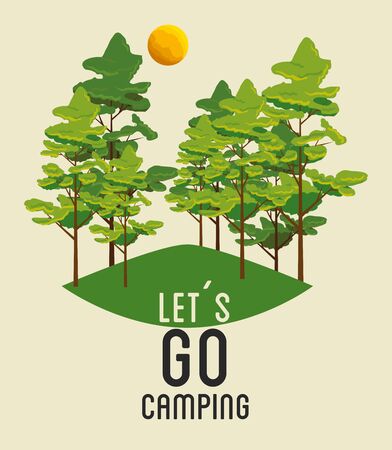Understanding Peak Season Challenges
If you’ve ever hit the trail during a long weekend or sunny summer morning in the U.S., you know just how crowded things can get. Peak hiking season—typically late spring through early fall—draws huge numbers of people to America’s national parks, state lands, and popular local trails. It’s not just about beautiful weather; school vacations, holiday weekends, and a general love for the outdoors mean that even lesser-known routes can feel more like city sidewalks than quiet escapes. For seasoned hikers, this crowding changes the rhythm of a favorite routine: parking lots fill up by sunrise, familiar switchbacks become social hubs, and solitude is suddenly in short supply. For newcomers, it can be overwhelming to navigate both the terrain and the throng of fellow adventurers. Understanding why trails get so busy isn’t just trivia—it helps everyone plan smarter hikes, minimize stress, and keep our wild places enjoyable for all.
Planning Ahead: Reservations, Permits, and Alternatives
If you’ve ever rolled up to a trailhead on a bluebird Saturday only to find the parking lot overflowing, you know that peak season hiking in the U.S. can be a logistical challenge. To make your adventure as smooth as possible, planning ahead is essential—not just for peace of mind, but also to ensure you comply with regulations and help protect these wild spaces. Here’s how to get ahead of the crowds and enjoy more solitude on your hike.
Securing Parking and Trail Permits
Many popular trails now require advance reservations for both parking and entry permits, especially during weekends and holidays. Websites like Recreation.gov have become the go-to platform for booking these spots at major destinations like Yosemite, Zion, or Mount St. Helens. Make sure you check the specific requirements for your chosen trail weeks—or even months—in advance.
Quick Reference: Permit & Reservation Essentials
| Trail System/National Park | Reservation Platform | Advance Booking Window | Notes |
|---|---|---|---|
| Yosemite National Park (Half Dome) | Recreation.gov | Up to 24 weeks ahead | Lottery system for peak dates; daily quotas enforced |
| Zion National Park (Angels Landing) | Recreation.gov | Seasonal lotteries + day-before lottery | No walk-up permits available during peak season |
| Mount St. Helens Summit | Recreation.gov | April–October release in February; daily quota | ID required at check-in; no same-day permits |
| Muir Woods National Monument | GoMuirWoods.com | As early as possible; fills quickly on weekends | Parking or shuttle reservations mandatory year-round |
Lesser-Known Trails: Your Best Bet for Solitude
If snagging a permit proves impossible or you just want to dodge the crowds altogether, consider exploring lesser-known alternatives nearby. Many states offer hidden gems with similar scenery but fewer people—think state parks, national forests, or BLM lands adjacent to major attractions. For example, instead of Yosemite Valley, try the Hetch Hetchy area; swap Angels Landing for Kolob Canyons in Zion; or trade Oregon’s South Sister for Mount McLoughlin.
Tactical Tips for Smart Planning:
- Bookmark reservation websites: Recreation.gov covers most federal land trails requiring permits; some state parks use their own systems.
- Set calendar reminders: Popular permits open months in advance and sell out within minutes.
- Prowl forums and social media: Recent trip reports on platforms like Reddit or AllTrails often reveal overlooked access points or alternative routes.
- Aim for off-peak timing: Hiking midweek or at sunrise often means easier parking and a quieter trail experience.
- Cultivate flexibility: Have backup hikes ready in case your first choice is full—sometimes plan B leads to unexpected discoveries.
Navigating crowded trails is all about preparation and adaptability. With a little research and some strategic thinking, you can turn what looks like a logistical headache into an adventure that feels all your own.

3. Trail Etiquette and U.S. Hiking Culture
Sharing the trails with others is a huge part of peak season hiking in the U.S., and understanding American hiking etiquette can make everyone’s experience better. First, know your right-of-way: hikers going uphill have priority, so step aside if you’re descending. When meeting groups or equestrians, yield to horses (always!) and give larger groups plenty of space. If you’re passing someone, a friendly “on your left” is standard and appreciated.
Popular viewpoints can get packed fast. Take your photos, enjoy the view, but move along so others get their turn—think of it like waiting for the next open treadmill at the gym. Keep noise levels down; many hikers are out there for some peace and quiet. If you’re hiking with friends, walk single file when trails are narrow and keep conversations at a considerate volume.
The Leave No Trace (LNT) principles are a big deal in American hiking culture. Pack out all your trash (yes, even organic waste like orange peels), stick to marked paths to protect fragile environments, and don’t pick flowers or disturb wildlife. Respecting these guidelines isn’t just good manners—it helps keep the outdoors beautiful for everyone who visits after you.
4. Timing Your Adventure
When it comes to hiking popular U.S. trails during peak season, timing is everything. Not only can the right timing help you avoid crowded trailheads and traffic jams, but it can also enhance your overall experience by giving you a quieter, more peaceful connection with nature. Here are some strategies to help you make the most of your adventure:
Hit the Trail Early or Late
The majority of hikers tend to start their journeys between 9 a.m. and noon, especially on weekends and holidays. If you’re looking for solitude, consider setting out at sunrise or in the late afternoon. Early mornings offer cooler temperatures, wildlife sightings, and softer lighting for photos. Evening hikes can reward you with golden hour views and fewer crowds, though be mindful of sunset times and bring appropriate gear if you might finish after dark.
Choose Off-Peak Days
Weekdays, particularly Tuesday through Thursday, generally see less foot traffic compared to Saturdays and Sundays. Planning your hike midweek could mean a nearly empty trail, even on routes that are typically packed. If your schedule allows flexibility, aim for these days to maximize tranquility.
Consider Seasonal Factors
Peak season varies depending on region and weather patterns. For example, summer months (June-August) draw the most visitors in national parks like Yosemite or Acadia, while spring (March-May) is prime time for desert hikes in Utah or Arizona due to milder temperatures.
| Region | Peak Season | Recommended Off-Peak Months |
|---|---|---|
| Western National Parks (CA/CO/WA) | June-August | September-October |
| Southeast Appalachians | October (fall foliage) | April-May |
| Southwest Deserts (AZ/UT/NV) | March-May | November-February |
| Northeast Trails (NY/VT/NH) | July-September | May-June & October |
Weather & Trail Conditions Matter Too
If you’re not tied to a specific date, keep an eye on local weather forecasts and trail reports. Sometimes a rainy forecast keeps crowds away but still offers a safe hiking window if you’re prepared with rain gear. Also, early or late season hikes might mean less congestion but also variable conditions—so double-check accessibility and safety updates before heading out.
Your Flexible Adventure Pays Off
The bottom line: flexible timing can be your secret weapon for navigating crowded trails in the U.S. By planning around peak hours, choosing off-peak days, and being mindful of seasonal nuances, you can reclaim a sense of wilderness—even on America’s busiest paths.
5. How to Stay Safe and Prepared
Peak season hiking means trails are packed, the weather can shift fast, and cell signals aren’t guaranteed—so safety isn’t just a good idea, it’s essential. Here’s how you can keep yourself (and fellow hikers) out of trouble and make sure your adventure is memorable for all the right reasons.
Bring the Right Navigation Tools
Don’t count on your phone alone! Download offline trail maps or bring a printed map and compass. Crowds can sometimes obscure trail markers, and popular apps may not update in real time. Knowing your route ahead of time helps you avoid getting lost if you need to take a detour or step off the main path to let others pass.
Pack for Unpredictable Weather
U.S. trails can throw curveballs: think sudden thunderstorms in Colorado or chilly fog in the Pacific Northwest—even in summer. Layer up, stash a rain jacket in your pack, and don’t forget sun protection. It’s smart to check the local forecast before heading out, but also prepare for surprises. If things go sideways, having extra dry clothes and a hat can make all the difference.
Hydration and Nutrition Essentials
Crowded trails mean longer waits at viewpoints or trailheads. Pack more water than you think you’ll need, and bring snacks that won’t melt or spoil—granola bars, trail mix, jerky. Hydration bladders are great for sipping on the go without stopping traffic behind you.
Stay Aware—and Share the Trail
Busy trails call for next-level awareness. Keep an ear out for announcements from park rangers or other hikers about hazards like wildlife sightings or slippery sections. Step aside safely when faster hikers want to pass, and stick to marked paths to avoid damaging fragile environments—or accidentally wandering into unsafe areas.
Emergency Prep Pays Off
No one likes to think about accidents, but being ready is key. Carry a basic first aid kit, a whistle for signaling, and let someone know your plan before you leave home (texting “I’m starting X trail at 9am” works wonders). If you’re headed into a more remote area, consider a personal locator beacon or satellite messenger—these gadgets save lives every year on U.S. trails.
Your Adventure, Your Responsibility
The freedom of America’s great outdoors comes with responsibility: be proactive about your safety so everyone can enjoy their hike. A little planning goes a long way toward keeping crowded adventures fun—and safe—for all.
6. Making the Best of a Busy Trail Day
Sometimes, no matter how early you hit the trailhead or how remote your chosen path, you’ll find yourself sharing the adventure with a lot of fellow hikers—especially during peak season in popular U.S. parks and wilderness areas. While crowded trails can feel overwhelming, approaching them with a practical mindset can turn a busy day into a rewarding outdoor experience.
Adjusting Your Mindset
Start by embracing the reality: you’re not alone out there, and that’s okay. Instead of focusing on what you might be missing in solitude, reframe the situation as an opportunity to share the outdoors with others who appreciate it just as much. A positive attitude sets the tone for your entire hike, helping you stay patient and flexible when passing slower groups or waiting at viewpoints.
Pacing Yourself Wisely
Crowded trails often mean adjusting your normal pace. Use this as a chance to slow down and really observe your surroundings—the wildflowers along the path, the way sunlight filters through the trees, or birdsong above the chatter. If you get bunched up behind a group, take it as a cue for a water break or to snap some photos. Remember, hiking isn’t a race; enjoy the journey as much as the destination.
Engaging with Fellow Hikers
Peak season brings people from all walks of life together on America’s trails. Take a moment to greet those you meet—a friendly “hello” or quick chat at overlooks can foster a sense of community and sometimes lead to valuable trail tips or local recommendations. Share trail etiquette reminders politely if needed (like yielding right-of-way), and don’t hesitate to offer or accept help if someone looks lost or needs assistance.
Finding Solitude in Small Moments
If solitude is important to you, seek quieter moments on busy days by pulling off at lesser-known side trails or taking short breaks away from main viewpoints. Early mornings or late afternoons tend to be less congested, so time your hike accordingly when possible.
Conclusion: Embracing the Shared Adventure
While peak season crowds can change the dynamic of your favorite hikes, they don’t have to diminish your enjoyment. With an open mind, flexible pace, and friendly engagement with others, even the busiest trail day can turn into an uplifting shared adventure—and who knows, you might come away with new friends or fresh appreciation for America’s wild places.

